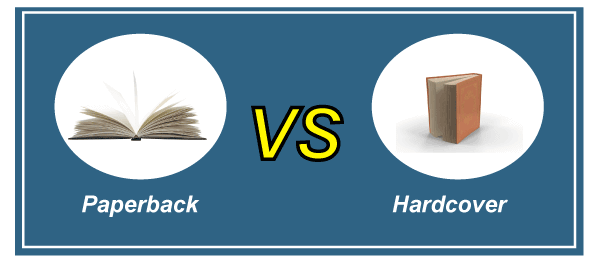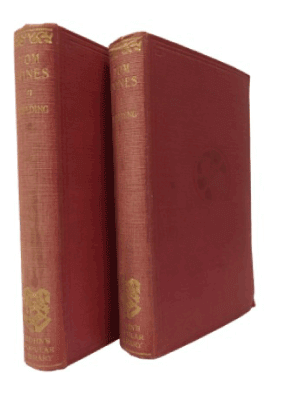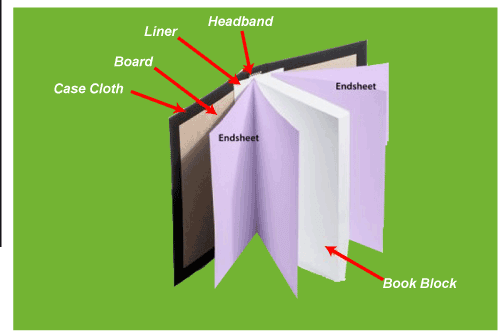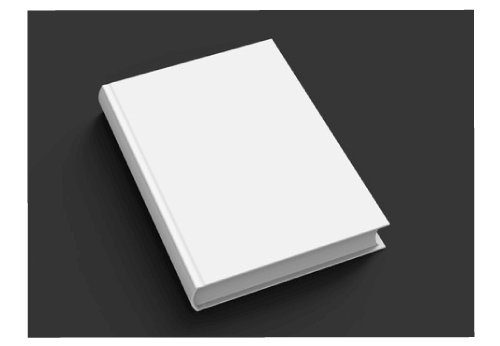The difference between hardcover and paperback isn’t restricted to the book’s cover. There terms are generally associated with publications. You can see two editions of the same novel in a store: one is a hardcover version, and the other is a softcover or paperback version. At first sight, the only distinction visible to the untrained eye is that a hardcover book has a solid cover, while a paperback book has a softcover. Aside from that, the materials and content seem to be identical. Why do these two kinds of books exist in the first place? In this post, we’ll look for the response to this riddle.

1) Hardcover
A hardcover is a sort of book bound by a tough, stiff, protective layer that sometimes holds the pages together with stitches and staples. These books are generally thicker, heavier and long-lasting, so, they are usually more costly than other types of books.

In the field of binding, the hardcover book is perhaps the most popular. The hardcover book, otherwise known as casebound or hardback, is a novel’s signature edition. Besides this, the first-editions are generally hardcover novels, which are highly sought after hardcore novels. So, in the beginning, the hardcover books are published to earn maximum profit by selling them to the segment of the public which is most committed to purchasing these hardcover books.
Unlike a paperback novel, the hardcover novel’s cover can be rendered in a variety of ways such as shirt, fabric, printed/laminated, including a dust jacket, bonded leather, and more. Besides this, Custom end-leaves, gilded corners, speckled, and edge staining are all included for hardcover book printing. Each of these personalized add-ons gives your hardcover book a more special and interesting look. Let’s take a look at each one:

End-Leaves with a Personal Touch
The finishing sheets are sheets of paper on the inside front and the bottom. You may use white, yellow, red, or blue for regular end leaves. You can also print any graphic for customized end leaves.
Gilded Edges
A common technique for bibles involves sanding and almost polishing the three sides of the book before applying a thin film of gold to the book edge with a heated silicon rubber roll. The majority of people believe this is only for aesthetic reasons to shield the books from the ingredients of human hands. Just look at the staining of the sheets of an old novel. Only silver and gold leaf foil is offered in matt or glossy finishes.
Edge Smudging and Speckled Edges
Line staining and speckled edges are two enjoyable ways to add a little uniqueness to your hardcover novel. The novel edges are coated with a fine mist to produce a spontaneous spotting effect cover on the novel with mottled sides. For outline staining, there are two forms of stain; liquid aniline dye, which has a small color range, and ink-based (more expensive) blemish, which can match almost any PMS color.
2) Paperback
The other most widely printed books in the printing industry are paperback novels, also described as softcover or great bound books. If you’re looking for inexpensive publishing, a paperback novel is the most cost-effective choice due to the resources involved. The paperback book is inexpensive to transport because of its sleek, lightweight form. For any printer with a budget, the paperback novel is the print medium of choice.

Adhesive binding is perhaps the most common technique for creating a great-bound book. Your text papers will be printed in book frames using this process. When you publish a book block, you print each page of a novel at once, but if you picked up the loose board, you’d be keeping all of the book’s inner pages. Signatures are an answer to this, so we’ll get to that first. The inner text sheets are usually printed with ink or conditioner on 60lb uncoated paper or 80lb painted paper. If the novel frames are complete, cut them at the spine and tie the articles to a published and laminated cover stock using EVA glue, a hot glue. PUR glue is used for even tighter binding. Paperback book publication usually is quicker than hardcover print publications.
While publishing in book frames, gluing is the most popular approach for creating a softcover book, it is far from the only one. When it comes to printing, hardcover and paperback books have two things in common. Both adhesive and sewn binding options are available. While adhesive adhesion is famous for paperback books, Smyth sewn binding is preferred for hardcover books. Smyth stitched novels are also the most sturdy and longest lasting.
| Hardcover | Paper cover |
| Hardcovers are expensive as compared to paperback. It may be due to their high manufacturing costs and additional features. | Paper covers are cheaper than hardcover. However, in some cases, a paperback edition can be more costly than a hardcover version such as when a book’s distributor has printed too many hardcover copies and their sale is not as much as predicted. The other case may be when two separate retailers publish hardcover and paperback, and the hardcover publication’s cost is somehow low than the paperback publication’s cost, or there can be a case when they’re printed in different editions or tongues. |
| Premium quality paper and printing are used. They also use primarily acid-free sheets, which solves the issue of protecting the document from deterioration. Additionally, their pages are heavier and have a more premium appearance. In hardcover novels, the font is even more significant, making it easier for the eyes to read. | Their paper and printing quality is average. They are generally made of low-quality paper, such as newsprint, which destroys easily. |
| The hardcover edition books are dense and stiff as they have a heavy and hard outer cover. Besides this, they could come with a soft dust jacket. The dust jacket protects the books from dirt and keeps the heavy cover clean. | The paper cover of paperback books is thin and not sturdy. They feature only soft covers and no dust jacket. |
| Hardcover novels are typically heavier due to their thicker pages and covers. It can be challenging to hold hardcover books or novels for extended periods without stressing your muscles. | The paper cover books or novels are lighter as they usually have lighter sheets and covers. As a result, paperback novels are easy to read and hold for a longer duration. |
| Hardcover is generally the first edition of any book or the first publication is generally issued in hardcover, followed by paperback editions. So, if you’re a massive fan of a particular author and can’t stop reading one of his novels, you have to purchase it in hardcover, even if it’s too pricey. | Paper cover books are published later. It can take a year or longer for the paperback edition of a book to be written after writing the hardcover edition. But, whether you want to wait too long or purchase it at the premium cost is entirely up to you. |
| Hardcover books are more durable and known for their longevity. Hardcovers provide tough protective cover and thick pages can withstand a couple of brutal treatments. So, if you’re looking for anything that can last, hardcover novels are the way to go. | The paper cover is less durable. If not treated correctly, paperback books can easily be destroyed. The edges of the book can bend, the pages warp and in some cases may fall out, the spine and covers of the book may get ripped. |
| Hardcovers are typically more extensive, with no variation in scale compared to other books. As a result, they could be neatly stacked alongside other hardback books in the bookcases. | The book format is smaller in paper cover books. Also, there are more differences in paperback editions’ dimensions. |
| Hardcover books are not portable. It would not be easy to take them with you if you are going anywhere and wanted to have some books with you. It takes up more room in your pocket due to its larger dimensions. So, carrying them can become an additional burden. | The paper cover books are portable and easy to carry as they are lightweight and adaptable. They also occupy less space. As a result, keeping paperback books is much easier. |



 Users Today : 37
Users Today : 37 Total views : 665052
Total views : 665052